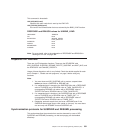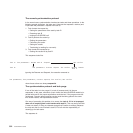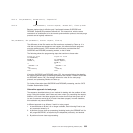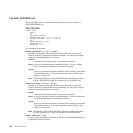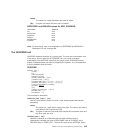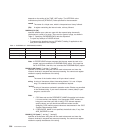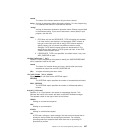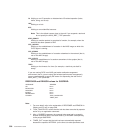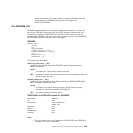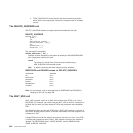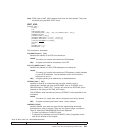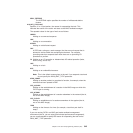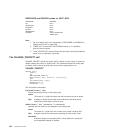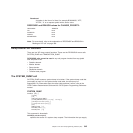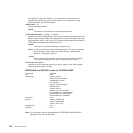attach) has expired. The token, however, remains suspended and must
be the object of a RESUME before it can be the object of a
DELETE_SUSPEND.
The RESUME call
RESUME restarts execution of a task that is suspended or timed out. There must
be only one RESUME request for each SUSPEND. However, because this is an
asynchronous interface, a SUSPEND can be received either before or after its
corresponding RESUME. You must ensure that you keep account of the SUSPEND
and RESUME requests issued from your exit program.
RESUME
DFHDSSRX [CALL,]
[CLEAR,]
[IN,
FUNCTION(RESUME),
SUSPEND_TOKEN(name4 | (Rn)),
[COMPLETION_CODE(name1 | (Rn)),]]
[OUT,
RESPONSE(name1 | *),
REASON(name1 | *)]
This command is threadsafe.
COMPLETION_CODE(name1 | (Rn))
specifies a user-defined “reason for RESUME” code during suspend and
resume processing.
name1
The name of a 1-byte area to receive the code
(Rn) A register, in which the low-order byte contains the completion code and
the other bytes are zero.
SUSPEND_TOKEN(name4 | (Rn))
specifies a token assigned by the system to identify the SUSPEND/RESUME
pair of operations used on the task.
name4
The name of a location where you have a 4-byte token previously
obtained as output from an ADD_SUSPEND call
(Rn) A register containing the token value.
RESPONSE and REASON values for RESUME:
RESPONSE REASON
OK None
EXCEPTION TASK_CANCELLED
TIMED_OUT
DISASTER None
INVALID None
KERNERROR None
PURGED None
Note:
1. For more detail, refer to the explanation of RESPONSE and REASON in
“Making an XPI call” on page 308.
Chapter 3. The user exit programming interface (XPI) 339



